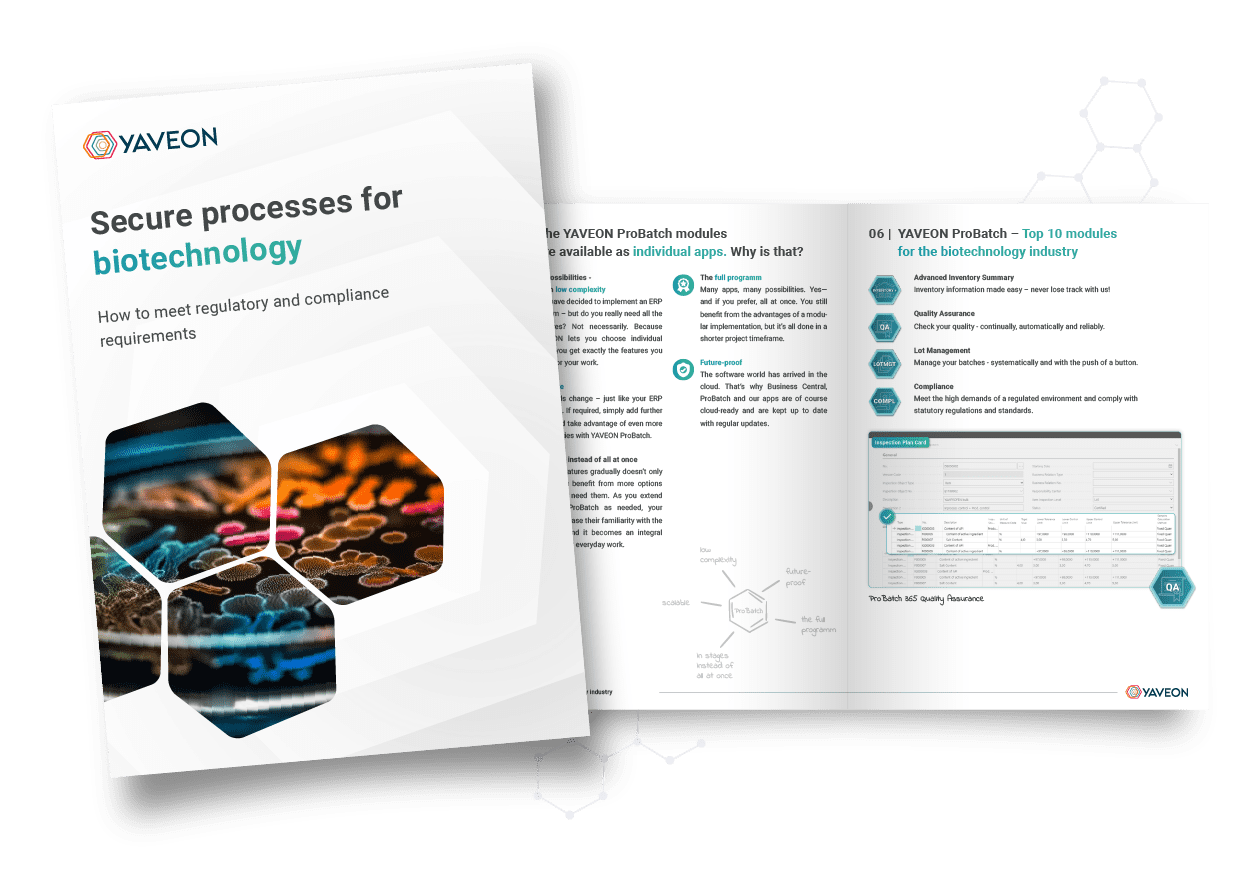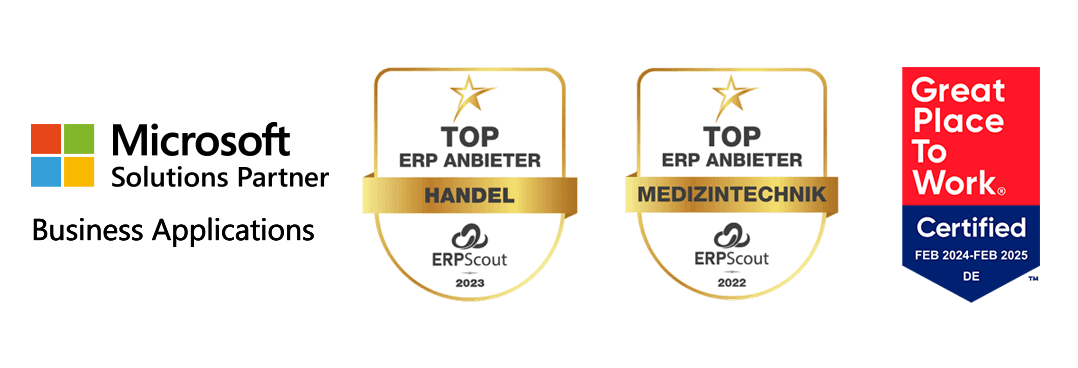Digitalization in biotechnology
What are typical time wasters, and how can digitization help to make processes more efficient? We will explain this in this article.

2. November 2023
Just a few months to develop a new vaccine— this is achievable due to the dynamics of biotechnology. From working with plant genomes to developing enzymes and aromatics, the biotechnology industry is booming. Current challenges facing biotech companies include the structuring and digitalization of elaborate and complex processes. While long development cycles hinder progress and increase costs. Repetitive routine tasks take a lot of time and drain resources in Research & Development. Biotech companies need innovation and fast time-to-market (TTM) strategies to remain ahead of the field. Increased efficiency is a must, but how do they achieve all this?
The key is digitalization. It has the potential to simplify and accelerate processes while reducing the workload. Everyone is talking about digitalization of processes, but what is the current status, and where are we on our journey? Why are digital processes groundbreaking for the biotechnology industry and how can they be realized? We will investigate these and other questions.
Biotechnology — critical digitalization trends
Digital tools and processes are already being used in the biotechnology industry, often facilitated by an ERP system. This provides a digital foundation for the enterprise resource planning. A good example of this is warehousing and logistics. Regardless of the type of product, ERP solutions digitally handle warehousing, organization, and shipping. The benefits are clear—faster results, fewer errors caused by manual handling, and more efficient work. But these examples can ultimately be applied to any industry. For biotechnology, there are more targeted areas of application that we call a digitalized laboratory. What these are varies from company to company. But what is special about the digitalized biotech lab? We can identify some common trends.
How software can help with digitalization in biotechnology
Software is critical for digitalization, and to mine the potential of biotechnology. ERP solutions are particularly helpful for companies because they offer digital opportunities at almost all process levels - including specifically for biotechnology. From financial accounting to goods receipt and batch tracing, in our ERP industry solution YAVEON ProBatch, you can find the required function for biotechnology.
-
Research and development
brings transparency and shorter development cycles
-
Production planning and production control
for efficient and safe manufacturing processes
-
Quality control including process monitoring
for highest quality products and satisfied customers
-
Supplier management
for successful business relationships
-
Suitable for computer system validation
to meet strict regulations
Long-term success for the biotech
The best basis for staying ahead? Our ERP YAVEON ProBatch, because it meets the strict requirements and regulations of the biotechnology industry.

Advantages of digitalization in biotechnology
It is very clear that digitalization with all its facets is already an integral part of the biotechnology industry. Now the question remains, what does a company gain from this? Why is it important that biotech companies keep moving forward and stay ahead of the pack? Here are some key benefits of digitalization in the biotech industry:
-
More precise diagnoses and more effective therapies
Personalized medicine with genetic data, new drug development opportunities, and shorter research cycles: This not only enables diagnoses to be made in a more targeted manner, but also make individualized treatments a reality. Rather than using a ‘one-size-fits-all’ approach to medications, personalized medicine provides drugs tailored to the disease and even the individual patient. The goal is to be able to treat suffering more efficiently and more successfully, and ultimately to save lives.
-
Collaboration across locations
Research is happening all over the world, with the smartest minds and latest devices spread across the globe. In the past, this meant that each research team worked independently. Exchange and cooperation were only possible with a lot of effort and patience. Today—thanks to digitization—researchers come together virtually, regardless of location. Tools such as Microsoft Teams and Outlook bring together researchers who were previously scattered around the globe to enable them to work on common (virtual) ground. And don’t forget cloud solutions. They are key to mobile working and cross-location collaboration. A future-proof ERP system is cloud-ready. Whether a private or public cloud solution is better suited for a company is always a case-by-case decision.
-
Accelerated research and development
The third major benefit of digitalization in the biotechnology industry follows on from the location-independent collaboration. By making it easier to share experiences, ideas, and data, the development cycle is reduced, and innovations reach the market faster. But simplified data analyses and simulations also accelerate research work—another focus that ensures that new insights can be gained more quickly. The appropriate features can also be found in the ERP or a suitable ERP industry solution. R&D modules facilitate the development and management of recipes and parts lists, enable targeted production releases, and take product characteristics into account. A combination that works.
-
Optimized production
As the company saves time, efficiency increases and manual deviations become rarer. What sounds like a dream is made possible by automation and robotics for production. Robots are well suited to take over repetitive tasks as they don’t have routines, so don’t fall into the trap of making careless mistakes or misunderstandings. This results in a decrease of errors. Employees also save time, which they can use for their more important tasks in production planning, production control, or elsewhere.
-
Reliable monitoring and highest quality
Manual controls are good, but prone to error. Why is that? Employees’ ability to concentrate is influenced by mindless repetition, distraction, and a sense of their well-being. Robots and sensors work according to fixed patterns; there are no deviations. The hidden trick — the Internet of Things, or IoT. This uses sensors to establish the appropriate connections between devices and reports any need for action. A typical example is the refrigerator, which uses sensors to detect that the milk carton is missing and automatically reorders it. In biotechnology, errors are avoided, production and laboratory processes can be reliably monitored, and the result meets the highest quality standards.
-
Plan resources more efficiently
The secret to successful business operations is good planning. Digital tools in general, and software such as enterprise resource planning solutions in particular, help to get the most out of them. They not only compile company data and digital workflows centrally, but also trigger these as well as work steps. Business and laboratory processes run more purposefully, resources are better allocated, and operations run with more results. Another way to efficiently depicting workflows digitally is low-code software, such as Microsoft Power Platform. The focus of the toolbox is on ancillary processes that are both cumbersome and time-consuming, and are therefore ideally suited for automation. A significant advantage is the low-code technology, because without being a programming expert, users implement the use cases themselves.
Simply digitalize with Microsoft Power Platform
Uncomplicated automated workflows for even the smallest secondary process? This saves time, reduces your workload and is very easy with the help of the Power Platform.

To summarize, digitalization in biotechnology is on the rise
Digitalization has already arrived in the biotechnology industry. Networked laboratories, miniaturization and artificial intelligence help ease the daily workload of companies, and enable them to look to the future with optimism. The results are impressive—faster processes and development cycles, new treatment methods, and safe workflows that leave more time for the more important tasks. These approaches have changed the role of humans in laboratories and production, and they are supported by automation systems such as robots. The focus changes from acting to controlling.
Looking into the future, we can see scenarios in which robots take over the actual work completely or augmented reality assists in the performance of tasks. Employees take over the final evaluation of information and quality and are the decision-making authority. Everything points toward a digital future. To be able to implement this successfully in their own company, managers are called upon to consolidate workflows. A culture of collaboration needs to develop where teams use the right digital tools. The main goal is scientific breakthroughs. When applied to your company, this results in a competitive and successful organization that leads the field. And who wouldn‘t want that?






